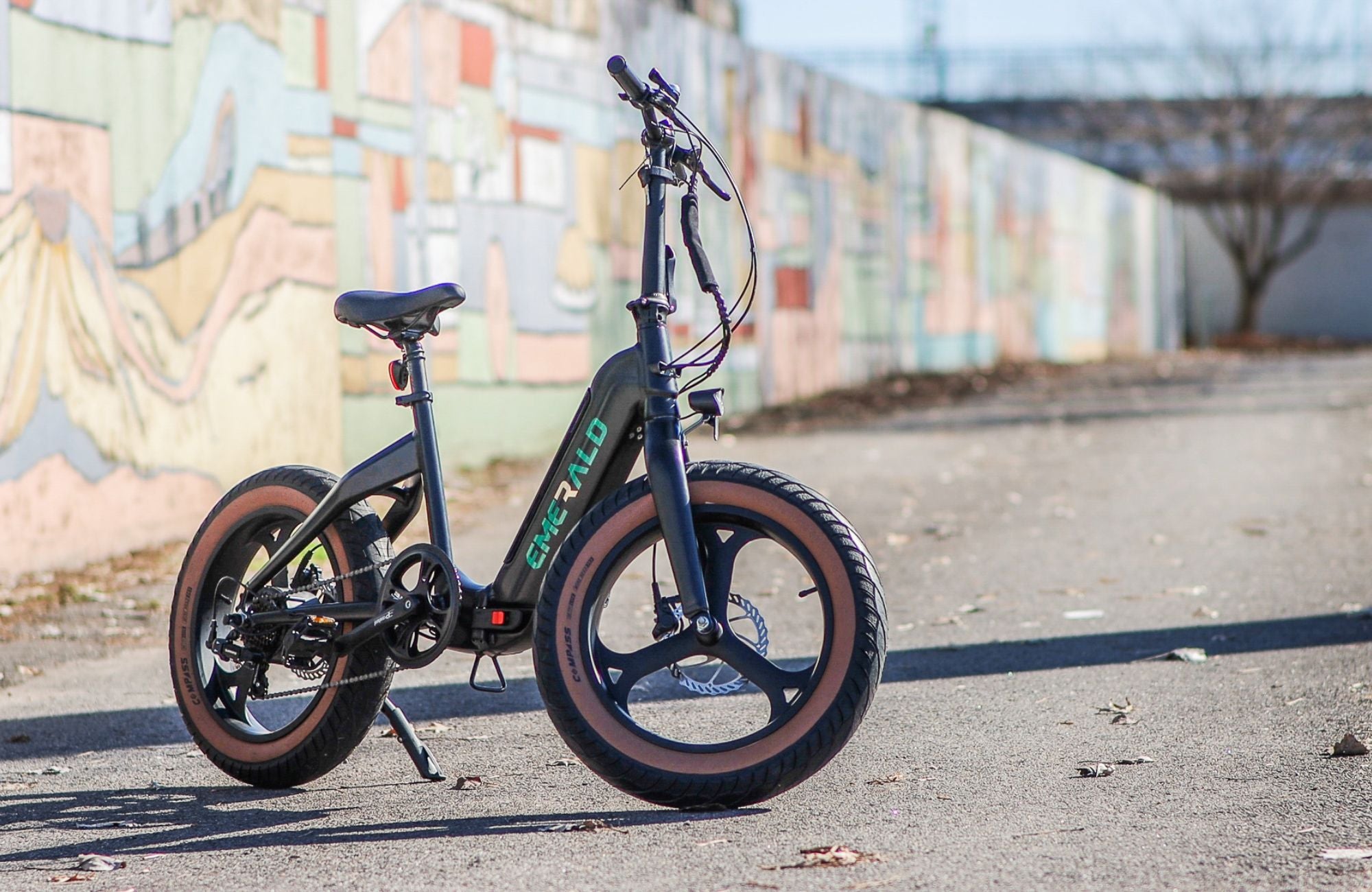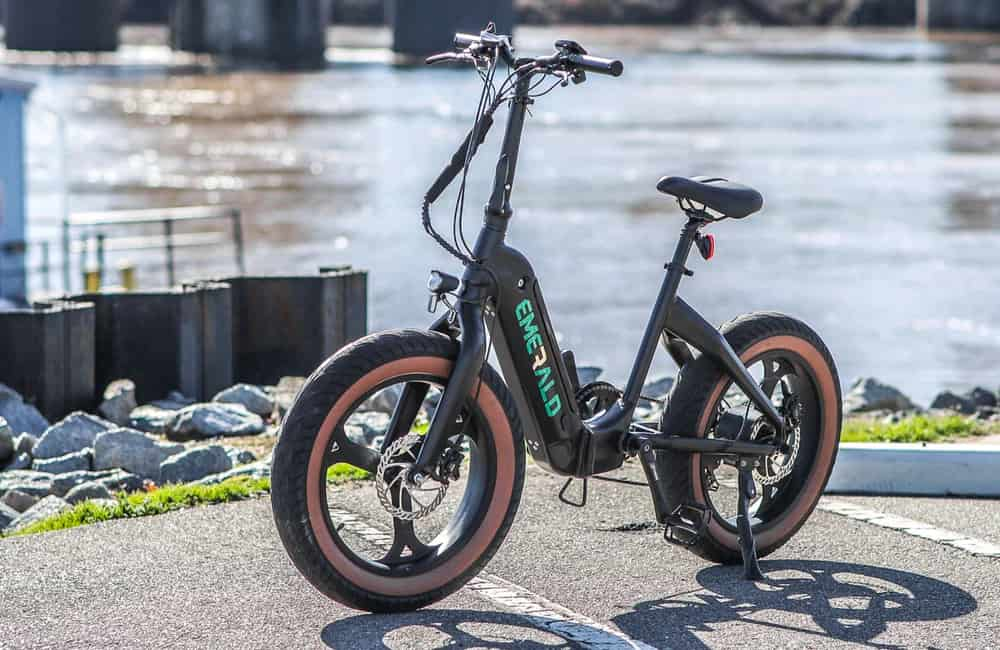Ebikes have become increasingly popular in recent years as a sustainable and efficient mode of transportation. An ebike combines the traditional bicycle experience with the added convenience of an electric motor, providing a boost of power to assist the rider's pedaling.
Ebikes can be ridden just like a regular bicycle, but the electric motor provides additional support to make it easier to pedal, especially on hills or long distances. In this article, we will explore the different components of an ebike and how they work together to provide a smooth and efficient riding experience.
Whether you’re a seasoned cyclist or a newcomer to the world of ebikes, this guide will provide a comprehensive understanding of how an ebike works.
Pedaling
In simple terms, the rider pedals the bike, which activates the motor. The motor then provides additional power to assist the rider's pedaling. Here's a more detailed explanation of the process:
Sensor: A sensor, typically located in the bottom bracket of the bike or in the pedals, detects the rider's pedaling motion.
Control Unit: The sensor sends a signal to the control unit, which is responsible for controlling the motor's power output. The control unit is usually located near the motor and battery.
Power Assist: Based on the signal from the sensor and other input from the rider (such as the bike's speed and the rider's cadence), the control unit determines how much power the motor should provide to assist the rider's pedaling.
Motor: The motor then provides the additional power to assist the rider's pedaling. The motor can be located in the rear wheel, in the center of the bike, or in the pedals.
Pedaling: The rider pedals the bike as they normally would, and the motor provides additional power to make pedaling easier. The rider can control the level of assistance by adjusting the bike's settings or by shifting gears.
Some ebikes come with a throttle, which allows the rider to control the motor’s power directly, without having to pedal.

Power Assist
Power assist is a key feature of ebikes that provides additional power to the rider when pedaling. This makes riding an ebike much easier and more enjoyable, as it reduces the effort required to pedal and helps the rider tackle hills and headwinds with ease.
There are two main types of power assist systems used in ebikes—pedal assist and throttle-based systems.
1. Pedal Assist System (PAS): In a PAS ebike, the motor provides additional power based on the rider's pedaling effort. The motor is connected to a sensor that measures the rider's cadence, or the speed at which they are pedaling. The level of assistance can be adjusted by the rider using controls on the handlebars, and it is usually indicated by numbers or power levels.
2. Throttle-based System: In a throttle-based ebike, the rider controls the motor directly using a throttle on the handlebars. This allows the rider to control the level of assistance without having to pedal. Some ebikes have both a throttle and a PAS system, giving the rider the option to choose the type of assist they prefer.
Motor
The motor is typically located in the rear wheel or in the center of the bike and is connected to the pedals and the battery. It is responsible for providing the extra power needed to move the bike.
Types of Motors: There are two main types of motors used in ebikes: hub motors and mid-drive motors. Hub motors are located in the wheel hub and provide direct power to the wheel. Mid-drive motors are located in the center of the bike and transmit power directly to the bike's chain, providing better efficiency and improved performance on hills and rough terrain.
Power Output: The power output of the motor is typically measured in watts and can range from 250 to 750 watts. The higher the power output, the stronger the motor and the more power it can provide to assist the rider's pedaling.
Torque: Torque is the twisting force that the motor generates and is measured in Newton-meters (Nm). The higher the torque, the more power the motor can deliver, which makes it easier to pedal up hills and through rough terrain.
Efficiency: The efficiency of the motor is an important factor to consider, as it determines how much of the battery's power is actually used to power the motor and how much is wasted as heat. High-efficiency motors use less power and produce less heat, which results in longer battery life and improved performance.
Battery
The battery is the power source for the motor and is typically located on the frame of the bike. It can be recharged by plugging it into an electrical outlet.
Types of Batteries: The most common type of battery used in ebikes is the lithium-ion battery, which is known for its high energy density, long life, and relatively low weight. Other types of batteries, such as lead-acid batteries, can also be used, but they are typically heavier and have a shorter life.
Capacity: The capacity of the battery is measured in watt-hours (Wh) and determines how much energy the battery can store. The larger the capacity, the longer the ebike can be ridden before the battery needs to be recharged. The capacity of ebike batteries typically ranges from 300 to 1000 Wh.
Recharging: Ebike batteries can be recharged using a charger that plugs into a wall outlet. The charging time depends on the battery's capacity and the charging rate of the charger, but most ebike batteries can be fully recharged in 4 to 6 hours.
Battery Life: The life of an ebike battery is determined by the number of charge cycles it can undergo before its capacity decreases significantly. On average, ebike batteries have a life of 500 to 1000 charge cycles, but this can vary depending on the quality of the battery and how it is used and maintained.
Control System
The control system of an ebike is the component that manages the interaction between the rider, the electric motor, and the battery. It regulates the power output of the motor, monitors the battery charge, and provides information to the rider about the status of the ebike. The control system includes the control unit, display unit, sensors, and software, which work together to provide a smooth and efficient riding experience.

Display
The display on an ebike is a component that provides information to the rider about the status of the bike. It is typically located on the handlebars of the ebike and can display a variety of information such as the battery level, speed, and level of assist being provided by the motor.
Some displays also show trip information such as distance traveled, average speed, and time elapsed. This information can be useful for tracking progress and monitoring the performance of the ebike. Some high-end displays also offer navigation functions, allowing the rider to plan a route and receive turn-by-turn directions.
The display unit usually has a user-friendly interface that allows the rider to easily access and interpret the information displayed. Some displays have buttons or a joystick that allow the rider to adjust the level of assist and access other functions.
Brakes
The brakes on an ebike are an important safety feature that allow the rider to slow down or stop the bike. Most ebikes use conventional bicycle brakes, such as rim brakes or disc brakes, but they may also have additional features specific to ebikes.
Rim Brakes: Rim brakes are the most common type of brake used on ebikes. They consist of brake pads that clamp onto the rim of the wheel to slow down the bike. Rim brakes are simple, lightweight, and low-cost, but they may not provide as much stopping power as disc brakes.
Disc Brakes: Disc brakes are becoming increasingly popular on ebikes, especially on high-performance models. They consist of a rotor attached to the wheel hub and a caliper that clamps onto the rotor to slow down the bike. Disc brakes provide more stopping power than rim brakes and are better suited to handle the increased weight and speed of ebikes.
Regenerative Braking: Some ebikes have a feature called regenerative braking, which allows the rider to recover some of the energy lost during braking. When the rider applies the brakes, the motor acts as a generator, converting the kinetic energy of the bike into electrical energy that is stored in the battery. This can help to extend the range of the ebike.
Motor Inhibitors: Most ebikes have a feature called a motor inhibitor, which cuts power to the motor when the brakes are applied. This helps to ensure that the rider can stop the bike safely and reduces the risk of accidents.
Brake Levers: The brake levers on an ebike are usually located on the handlebars and are connected to the brakes via cables. Some ebikes have hydraulic brakes, which use a hydraulic system to transfer force from the brake lever to the brake pads. Hydraulic brakes are typically more powerful and require less maintenance than cable-actuated brakes.
The Recap
In summary, an ebike is a bicycle that is equipped with an electric motor and a battery, which provides assistance to the rider. The motor is powered by the battery and can be controlled by the rider using a throttle or a pedal-assist system. The battery provides energy to the motor, and the amount of assistance provided by the motor can be adjusted by the rider.
The display unit on the handlebars provides information to the rider about the status of the bike, including the battery level, speed, and level of assist. The brakes on an ebike are an important safety feature that allow the rider to slow down or stop the bike. Most ebikes use conventional bicycle brakes, such as rim brakes or disc brakes, but they may also have additional features specific to ebikes.
Overall, an ebike provides a convenient and eco-friendly mode of transportation that can make cycling easier and more enjoyable. Now that you know everything there is to know about how ebikes work, it’s time to get shopping for the perfect ebike for you!








Leave a comment
This site is protected by hCaptcha and the hCaptcha Privacy Policy and Terms of Service apply.